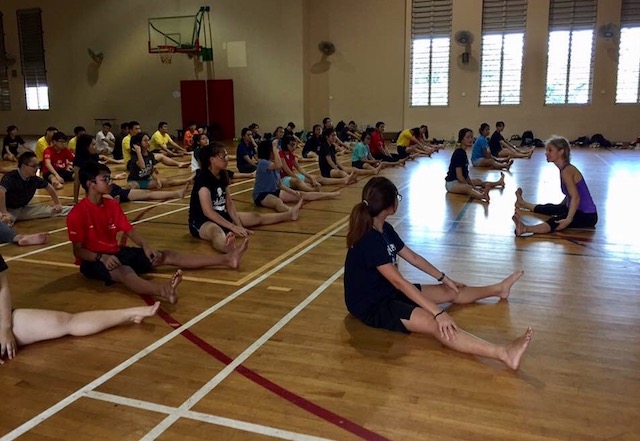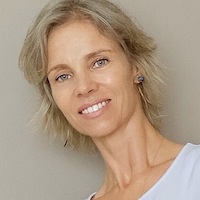
My eldest son, Rafi, is 16 and has ASD (Autism Spectrum Disorder). He displays a lot of those quirky ASD characteristics we so often read about, or see in films, featuring characters with autism.
He suffers from crippling social anxiety yet can talk to you for hours (yes, hours) about transitional metals. His favourite ones right now are osmium and tungsten.
It’s a daily battle for him to fit in at his big, loud mainstream school with its “tedious and irrelevant” curriculum. Every night he tries to calm his racing mind to get a few hours of sleep.
I sometimes refer to him when teaching yoga. Although it seems to Rafi that he is on the outside of human life as an observer, he has to learn how participate. He has to learn independence, how to deal with people and everyday situations, and to manage his anxiety.
In many ways, his life is an exaggeration of the challenges we all face.
He hates physical exercise, but sometimes joins my yoga classes and says: “It’s hard but tolerable. I very much enjoy the feeling of relaxed clarity after the class.”
The non-competitive nature of yoga and having the choice of which levels of poses to do are big draws. Not having to be on a team, throw a ball, or communicate with anyone also helps.
The slow, steady pace of class is comforting. The breathing exercises in pranayama help calm his anxiety and meditation is helping him to know his thought patterns.
Gaining strength, flexibility and coordination from asana practice has great benefits too.
I recently taught a yoga class at a three-day camp here in Singapore. Around half the students had ASD and some had other challenges, such as, Down Syndrome.
Class conditions weren’t ideal. We were over 50 people with a huge range of abilities in a big echoey school gym with no mats.
People with ASD are sensorially very sensitive, so the lighting had to be shaded and visual distractions moved from the sides and front of the room.
People with ASD often find a long run of different instructions difficult to process, so I always keep instructions simple and logical, with lots of repetition and pauses for mental processing time.
Directly after class one guy plucked up the courage to come and talk to me. With no eye contact he said hurriedly, “You know that bit at the end, where you said what that word namaste means about the light energy in us and how it’s the same in us all, and all that?”
“Yes,” I said.
“Is that really true? Do we all really have something inside that is the same in all of us, and are we all really connected, together? The same, really?”
“Well, yes, I think we are.”
“Alright. I like that. Good. Goodbye.”
The therapeutic effects of yoga for people with ASD are almost without limit.
Many studies have shown that body awareness, balance, imitation skills, self regulatory behaviour and spatial awareness all dramatically improve with regular practice.
So I encourage all you yoga teachers—those well-trained and experienced—to not resist teaching people on the spectrum.
If the statistics we read are right, the proportion of people with Autism is getting higher worldwide. This is a growing community of people, whether young or old, that can clearly benefit from a regular yoga practice.
A yoga class offers people with ASD a break from social anxiety, making it a safe place to get used to being around others. Regular practice within a known group gives the chance to feel a sense of community and belonging.
Stacey Nelson, an Australian yoga therapist and teacher trainer, says:
“It is important for yoga teachers to give children with ASD the freedom to choose from different options during relaxation, such as, keeping their eyes opened or closed; to sit or lie down; to roll up in a mat or have a blanket on their chest to help further calm their sensory input.”
Here are some more helpful tips:
1) Don’t feel insulted by a lack of communication or eye contact. It’s normal.
2) Repeat pose patterns and mini sequences.
3) Don’t play music. Listening to your voice is enough to take in.
4) Cue a movement then pause, observe, and wait for it to be done before introducing the next one. A string of fast moving commands is just too much to process. Demo and mirror with your body whenever possible.
5) Keep lighting pretty low and other visual and noise distractions to a minimum.
6) Don’t physically adjust. If students don’t get what you’re saying, say it or show it again in a different way.
7) Make sure there’s plenty of personal space between each student and each mat.
8) Smile and use light humour. It’s a great tension and anxiety breaker. Not all people with ASD can process facial expressions, but many can. And those that can’t can definitely feel your energy.
Yoga is a wonderful non-competitive way for people with ASD to get some physical exercise, peace of mind and a great way to make safe connections in this big scary world.
There are already many studios and teachers offering classes to kids on the spectrum.
My hope is that studios will start to cater to teens and adults too.
It would be wonderful to see studios or independent teachers welcoming people with ASD. Perhaps some classes could be offered in this way: “Spectrum, introverts or just plain shy people welcome!”
Well, why not? They may well become the most popular classes.
~
~
~
Author: Sarah Barguirdjian
Image: Author’s Own
Editor: Travis May

 Share on bsky
Share on bsky






Read 1 comment and reply